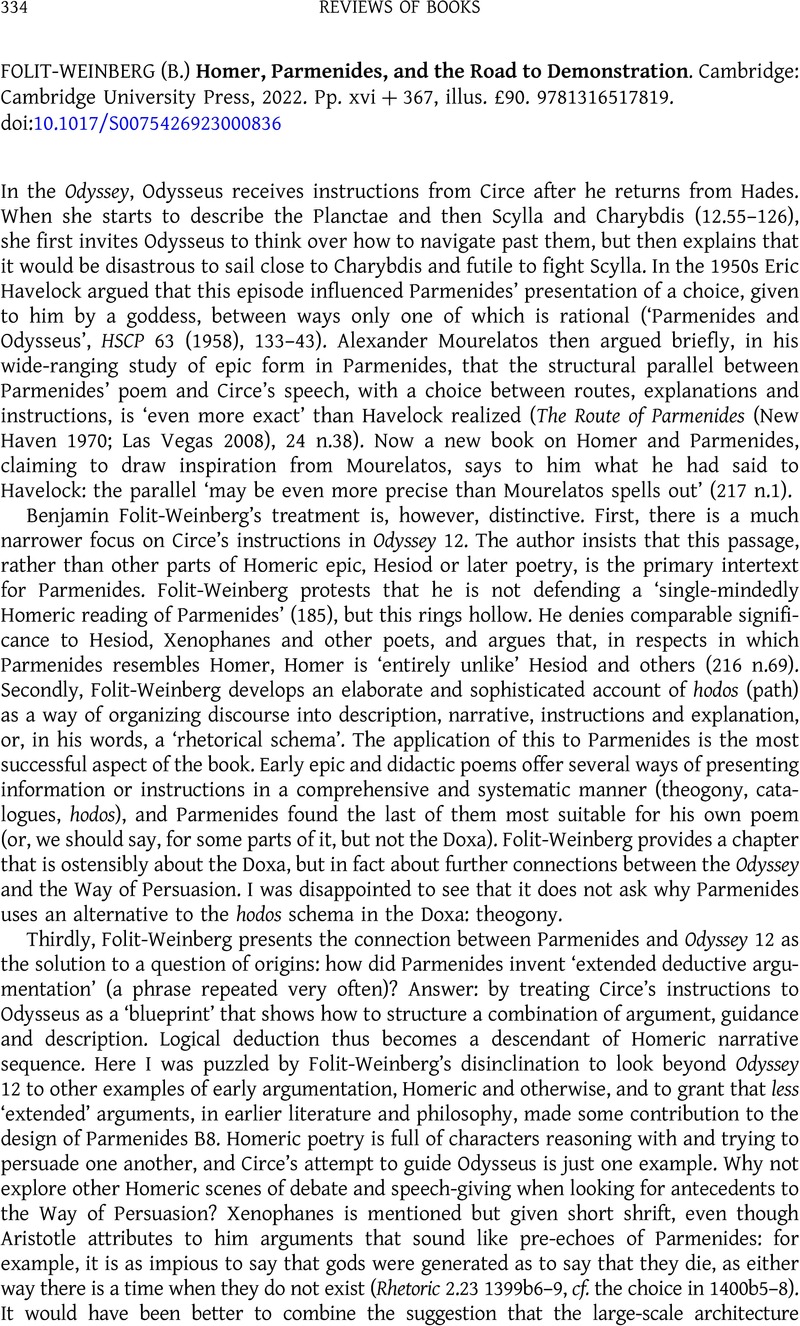No CrossRef data available.
Article contents
(B.) FOLIT-WEINBERG Homer, Parmenides, and the Road to Demonstration. Cambridge: Cambridge University Press, 2022. Pp. xvi + 367, illus. £90. 9781316517819.
Review products
(B.) FOLIT-WEINBERG Homer, Parmenides, and the Road to Demonstration. Cambridge: Cambridge University Press, 2022. Pp. xvi + 367, illus. £90. 9781316517819.
Part of:
Philosophy
Published online by Cambridge University Press: 12 October 2023
Abstract
An abstract is not available for this content so a preview has been provided. Please use the Get access link above for information on how to access this content.

- Type
- Reviews of Books: Philosophy
- Information
- Copyright
- © The Author(s), 2023. Published by Cambridge University Press on behalf of the Society for the Promotion of Hellenic Studies


